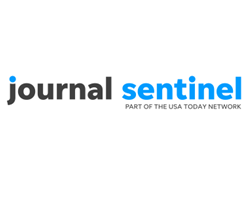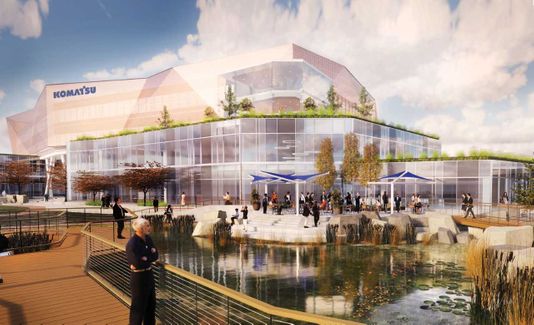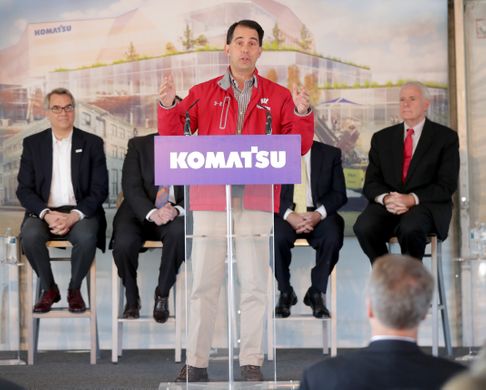Komatsu Could Get $25 Million in City Cash, But Only if Harbor District Campus Has 1,300 Jobs

By Tom Daykin
November 2, 2018 - Komatsu Mining Corp. could receive up to $25 million in direct city financing assistance for its planned Harbor District corporate campus — but only if the company creates 1,300 jobs.
The proposed city financing for the $285 million Komatsu development would come from its property taxes, according to the new city proposal — which would need Common Council approval.
Those property taxes would finance annual payments to Komatsu for up to 25 years. The payments would be equal to 50 percent of the annual new tax revenue.

Komatsu Mining Corp's planned corporate campus in Milwaukee's Harbor District could get up to $25 million in direct financing help.
Photo by Komatsu Mining Corp.
The proposal also calls for spending $15 million to build a 4,300-foot-long stretch of public RiverWalk, extending from the end of East Greenfield Avenue up the Kinnickinnic River to South Kinnickinnic Avenue.
The city would pay for all of the RiverWalk's costs.
That differs from the typical formula of the city paying around two-thirds of a RiverWalk tab, with the private developer picking up the remaining expense.
The financing package details are contained within a proposed tax incremental financing district project plan for the Komatsu development site.
The financing proposal is to have its initial public hearing before the city Redevelopment Authority at its Nov. 15 board meeting.

Gov. Scott Walker speaks as Jeff Dawes (left), president and CEO of Komatsu Mining Corp., and Mayor Tom Barrett (right) listen as Komatsu Mining Corp. announced details Thursday of a new development in Milwaukee's Harbor District.
Photo by Mike De Sisti, Milwaukee Journal Sentinel
Komatsu in September announced plans to move its manufacturing operations now based at 4400 W. National Ave., West Milwaukee, as well as corporate offices at Honey Creek Corporate Center, 135 S. 84th St., on Milwaukee's far west side, to the Harbor District.
The corporate campus would be on a 60-acre site overlooking the inner harbor at the end of East Greenfield Avenue.
t’s the largest development site in the Harbor District, where work is underway to convert vacant lots and underused buildings into a hub of industrial jobs, housing, retail space and other new uses.
Komatsu hopes to break ground by fall 2019, with completion of its first phase by the end of 2022.
The corporate campus, which could eventually total 2.5 million square feet, will provide room for Komatsu to have 946 full-time employees within 12 years — and possibly 1,300 jobs long-term.
The company is expected to have 598 employees at the Harbor District site by 2023, according to a contract between Komatsu and the city.
The city payments to Komatsu would total $18.2 million by 2034 — if the company has 946 employees by that year, according to that agreement. The annual payments would be proportionately reduced by no more than $19,230 for each job that falls short.
Meanwhile, Wisconsin Economic Development Corp. has agreed to provide the company $59.5 million in state income tax credits over 12 years.
The amount of those tax credits will depend on the number of jobs created and retained, the amount of capital investment, and the amount spent on purchasing equipment, goods and services from Wisconsin-based companies.
The Komatsu project's initial phase will feature 170,000 square feet of office space and a 500-stall parking structure on what is now a city-owned site overlooking the harbor.
It will include around 410,000 square feet of manufacturing space to be built on the adjacent former Milwaukee Solvay Coke Co. site. There also will be a 20,000-square-foot museum and training building.
Those buildings are expected to total an estimated $64.4 million in new property values, according to the financing proposal.
The financing plan also said the city might buy a small portion of the former Solvay site, north of East Greenfield Avenue between two sets of railroad tracks, for a possible future transit hub.

